|
While the location of many dive sites are passed on from one diver to another and others are found by searching interesting looking areas, some are found through chances of nature. Indirectly, this is how we found this dive site.
Our plan had been to dive Pizza Reef off Jibbon Bombora at the northern end of Royal National Park. There was a strong southerly wind and large southerly swell running as we located the reef and dropped anchor off the southern end of the small reef. In a short time we hooked in and I checked the depth sounder, sure enough we were in about 21 metres, the right depth. What I did not realise was that the wind was actually a south-westerly so we were pushed in a north-easterly direction, parallel to the edge of the reef. We were not on Pizza Reef, but hooked up on an adjacent reef about 130 metres to the north-east. After the first divers entered the water I looked at the GPS and realised that we were not on Pizza Reef but as the others did not return, I figured that it must have been okay. This was actually the dive site we call Maccas.
After we dived this location, we decided to investigate the reef to the north of this location. Using our depth sounder, we zig-zagged along the reef edge to the north, monitoring the wall. About 150 metres away we found another interesting section of wall. We named the new reef Hungry Jacks (since all the other dive sites in this area we have called after fast food chains (Pizza Reef, KFC, Maccas and Red Rooster).
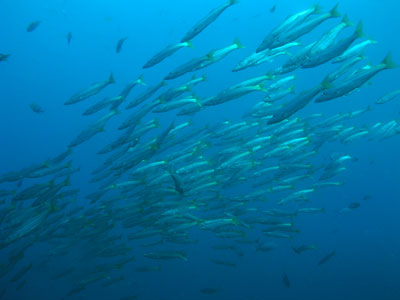 | 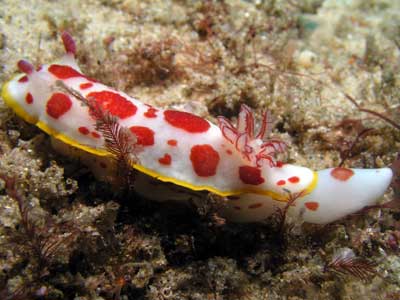 |
| A huge school of seapike above the reef | A nudibranch on this site |
To find the site, go out of Port Hacking and turn a little to the south once you are level with Jibbon Bombora. The GPS mark for the anchoring spot is 34° 04.8320' S 151° 10.8774' E (using WGS84 as datum - if you use any other datum, you will need to convert the reading - see my GPS Page for more details). The site consists of a wall that runs north/south. The depth of the sand is about 27 metres and it is about 20 metres on the reef top. Drop anchor on the reef top in all but north-easterly winds.
Once you are on the bottom you will find a wall that drops from 20 metres to 24 to 25 metres or so and then slopes across some rocks to just over 27 metres. This section has many small boulders going out to a small wall and then the sand.
 | 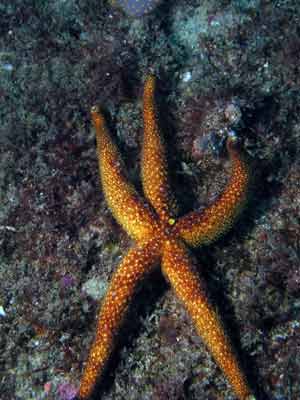 |
A large anchor that appears
to be an Admiralty type | A starfish on this site |
Head north for about 10 minutes. As you go, the rocky section off the main wall disappears and is replaced by sand at 27 metres. There are some larger boulders along here. The main wall and the boulders have lots of very large sponges, some small gorgonias and many sea squirts. This is very colourful. As you go, look under the boulders and you may see some Port Jackson sharks and cuttlefish. On the sand there are sometimes sea dragons, although not very many.
After 10 to 12 minutes the reef gets a little flatter. Here the reef peters out a bit and turns a little to the west. This location is probably where you should turn around. If you head to the west (across a small section of sand) you will come to an even more prominent reef. There are some low but large overhangs and tiny caves here. Head back to the south along this section of reef and you will come back to the main reef. Stay on the top of the reef and continue back to the anchor.
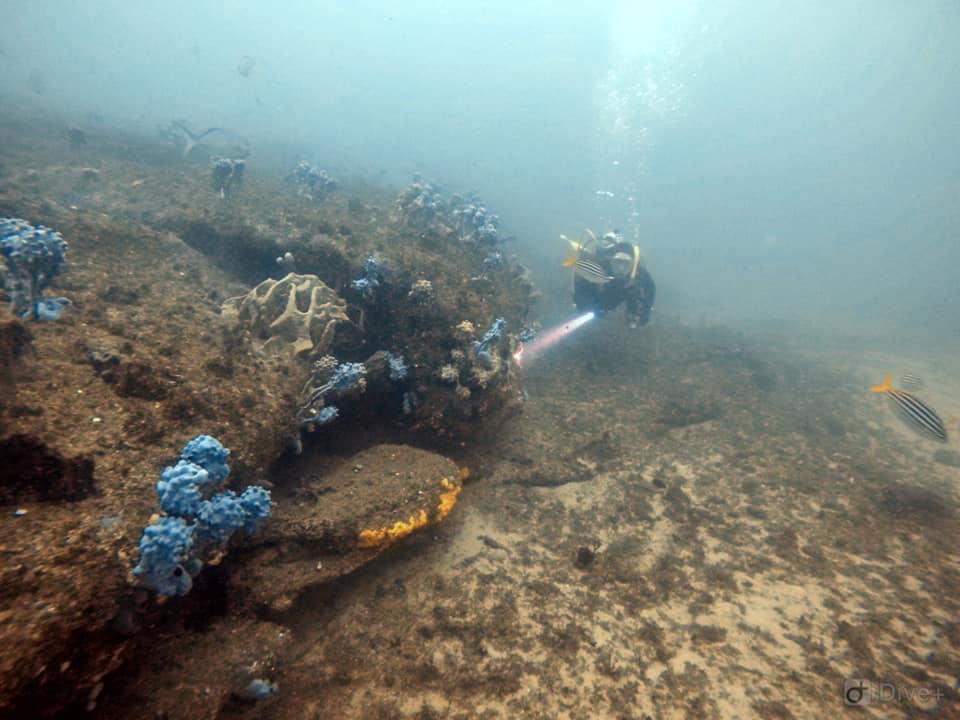 | 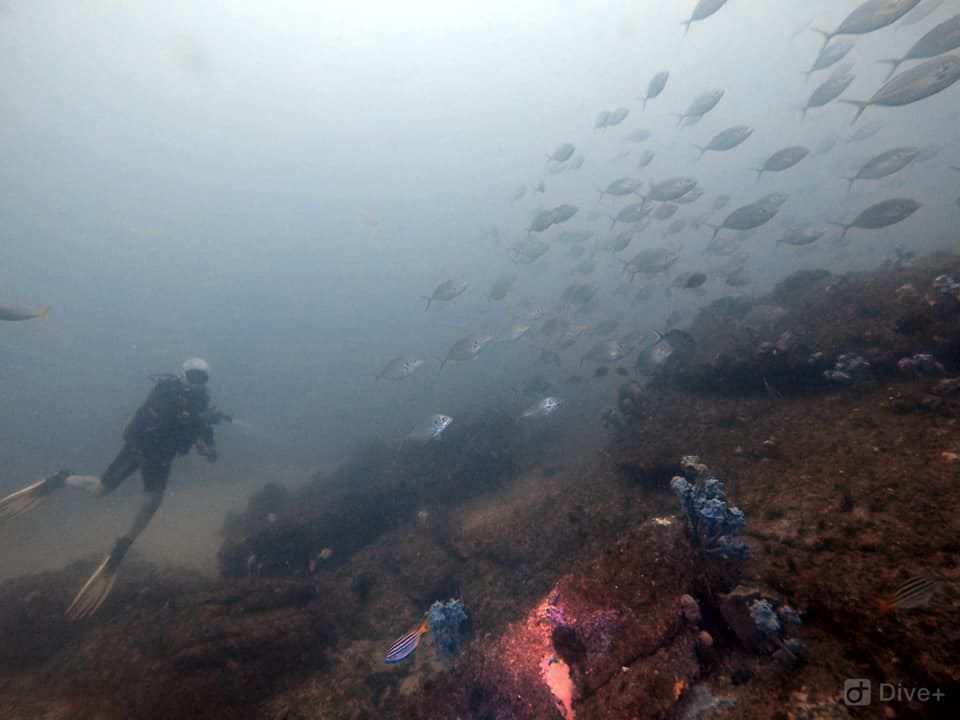 |
| Judy Morris on a section of the wall to the north | Les Caterson with a lot of yellowtail near the anchor spot |
Back at the anchor you probably will still have some time so go south past the anchor. Head out a bit deeper (to the east) and go south and then back to the west to the main wall. Follow this back to the anchor. Since you will still have some time left, spend it on the reef top exploring the small cracks and overhangs.
The fishlife here is sometimes prolific. On dives here we have seen huge numbers of seapike, yellowtail, silver sweep and trevally. There are also lots of bastard trumpeters, black reef leatherjackets, one-spot pullers and other fish.
Another great dive site out of Port Hacking.
| 
 v6.00.307 © 2003-2005
v6.00.307 © 2003-2005